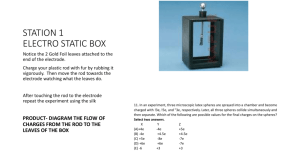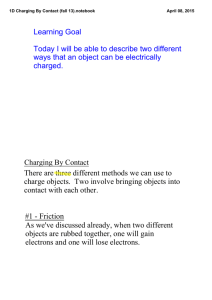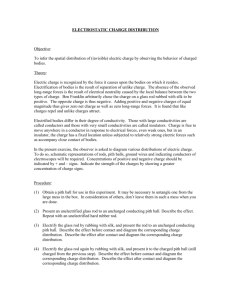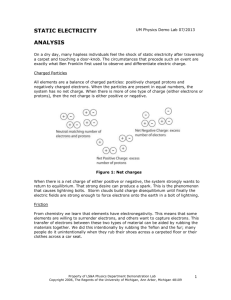2 - Fields Lab
advertisement
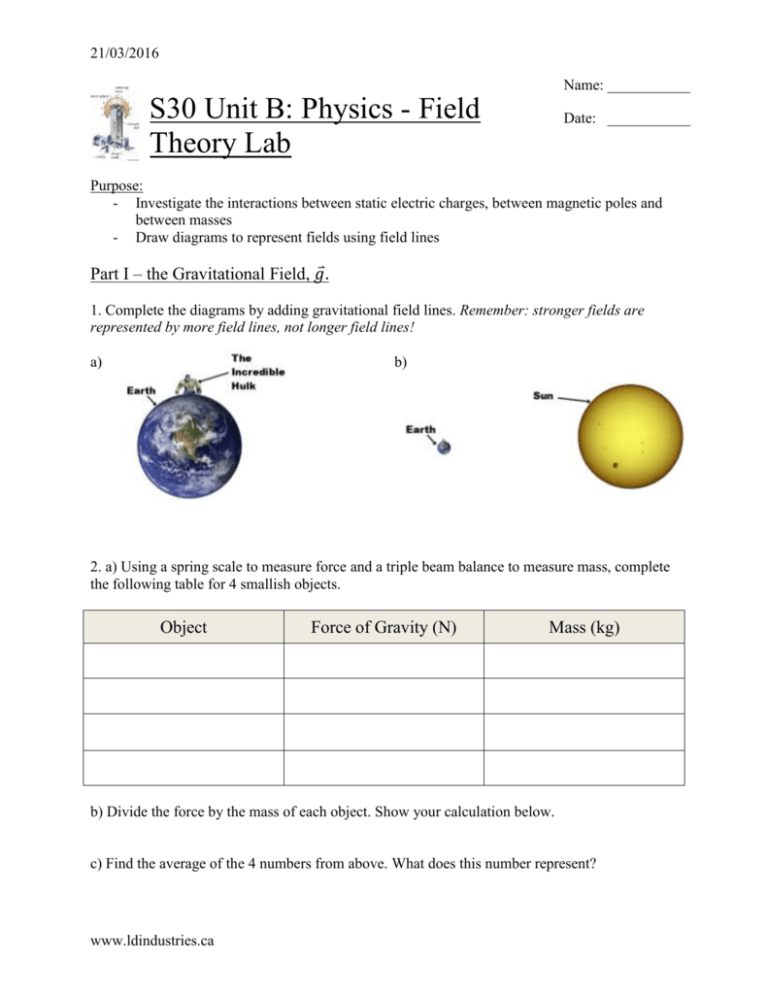
21/03/2016 Name: ___________ S30 Unit B: Physics - Field Theory Lab Date: ___________ Purpose: - Investigate the interactions between static electric charges, between magnetic poles and between masses - Draw diagrams to represent fields using field lines Part I – the Gravitational Field, 𝑔⃑. 1. Complete the diagrams by adding gravitational field lines. Remember: stronger fields are represented by more field lines, not longer field lines! a) b) 2. a) Using a spring scale to measure force and a triple beam balance to measure mass, complete the following table for 4 smallish objects. Object Force of Gravity (N) Mass (kg) b) Divide the force by the mass of each object. Show your calculation below. c) Find the average of the 4 numbers from above. What does this number represent? www.ldindustries.ca 21/03/2016 Part II – the Electric Field, 𝐸⃑⃑ . Step 1 The charge on the pith ball is neutral. There is no charge on the ball. RECORD YOUR RESULTS Step 2 – Bring Rod Close (do not touch) Step 3 – Touch Pith with Rod Rubbing the ebonite rod with fur creates a negative charge on the rod. Draw negative charges on the rod. After touching the ebonite rod to the pith ball it gives some negative charges to the pith ball. Draw negative charges on both the pith ball and the rod. The ball moved toward letter ______ The ball moved toward letter _______ Step 4 – Charge Glass Rod Step 4 – Touch Pith with Rod Rubbing the glass rod with fur creates a positive charge on the rod. Draw positive charges on the rod. After touching the glass rod to the pith ball it takes some negative charges from the pith ball. Draw the movement of charges. The ball moved toward letter ______ The ball moved toward letter _______ www.ldindustries.ca 21/03/2016 Part III – the Magnetic Field N 1. Obtain a magnet and a compass and record the direction of the field lines . www.ldindustries.ca 21/03/2016 2. Place the two magnets on the lab bench so that two like poles are about 2 cm apart. Cover the magnets with a piece of paper and sprinkle iron filings on the paper. Observe the pattern and draw a diagram of the lines of force between the two magnets. 3. Place the two magnets on the lab bench so that two unlike poles are about 2 cm apart. Cover the magnets with a piece of paper and sprinkle iron filings on the paper. Observe the pattern and draw a diagram of the lines of force between the two magnets 4. Place a horseshoe magnet on the lab bench and cover with a piece of paper. Cover the paper with iron filings. Observe the pattern and draw a diagram of the field lines between the two poles. www.ldindustries.ca
